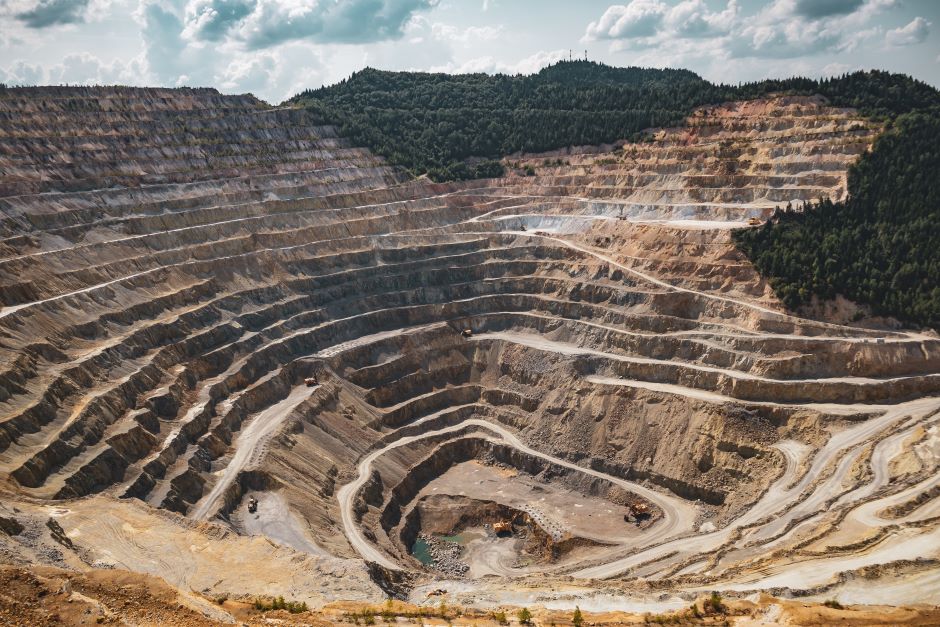Mining Runoff Introduces Mercury to Aquatic Ecosystems
 (Credit: Vlad Chețan, via Pexels)
(Credit: Vlad Chețan, via Pexels)Thanks to the industrial revolution and each region’s respective mining booms, mercury and other toxic materials have left their mark on the ecosystems surrounding mining sites. Mining creates a plethora of physical debris that contaminates the area around facilities and can enter waterways in the form of runoff.
According to the USGS, this runoff contains sulfuric acid and dissolved iron due to the chemical reaction between water and rocks containing “sulfur-bearing minerals.” The sulfuric acid travels through streams and flooding events wherein it “further dissolves heavy metals like copper, lead, and mercury into groundwater or surface water.”
The metal-rich water, often referred to as mine or mining drainage, can harm aquatic ecosystems and resources. The USGS lists the following as potential byproducts of acidic, metal-laden drainage: “contaminated drinking water; disrupted growth and reproduction of aquatic plants and animals; and the corroding effects of the acid on parts of infrastructures such as bridges.”
How Mining Pollutes Water
There are multiple mining methods that may be used to excavate a site, but in general, miners will be searching for ore, or mineralized rock, and discarding waste rock. Open-pit mines are one example of a surface-mining method that digs down at an angle (as opposed to a quarry which is categorized by steep inclines), and the mined materials are then processed.
The Safe Drinking Water Foundation explains, “The ore is then crushed into finely ground tailings for processing with various chemicals and separating processes to extract the final product.” The SDWF also reports that, in Canada, “on average for every tonne of copper extracted 99 tonnes of waste material must also be removed.”
The act of mining disturbs nearby water sources, and site waste finds its way into lakes, rivers, and streams, altering the ecosystem. The sulphuric acid formed by the sulfides in mined rocks being exposed to air and water leads to continuously acidizing waste.
Once a certain acid level is achieved, Thiobacillus ferrooxidans, a naturally occurring bacteria, may become active. This bacteria accelerates the oxidation and acidification processes leading to more trace metals being stripped. The SDWF explains, “The acid will leach from the rock as long as its source rock is exposed to air and water and until the sulfides are leached out – a process that can last hundreds, even thousands of years.”
Ultimately acid mine drainage degrades water quality, harms aquatic life, and makes water effectively unusable due to the acid levels present. One heavy metal that has recently earned a name in water pollution is mercury.
The 19th-century gold rush brought hundreds of thousands of Americans to the west and caused many to settle in the new terrain. The decades of mining that followed destabilized the ecosystems in the region, and the negative impacts are still felt today in overall water quality and the health of aquatic wildlife.
How Fish Accumulate Mercury
For a long time, few were concerned about the mercury found at mining sites due to the low levels recorded in the soil. More recently, scientists have begun examining how mercury is more harmful than they ever thought before.
Things get weird once mercury enters water ecosystems wherein the previously low-levels bio-accumulate and biomagnify to dangerous levels. The previously organic mercury compounds to become methylmercury, a highly toxic neurotoxin.
According to the South Yuba River Citizens League, sports fish that eat smaller fish generally have the highest concentrations, which leads to illness for both the fish and the people that consume the contaminated animal. This process allows methylmercury to spread throughout a food chain and from parent to fry.
Flooding allows mercury to begin the methylation process and carries the heavy metal to waterways where it is available to fish and works its way into the ecosystem. Mercury levels can reach unsafe levels in fish and lead to restrictions and dietary guidelines surrounding fish consumption.
Impacts of Mercury
According to the Department of Environmental Conservation, “Mercury is tightly bound to proteins in all fish tissue, including muscle. There is no method of cooking or cleaning fish that will reduce the amount of mercury in a meal.” Unfortunately, mercury is so ingrained in ecosystems that it is unlikely that fish will become totally mercury-free in the future.
Efforts to restore ecosystems are not in vain, as various remediation projects have decreased mercury levels in fish and kept levels low enough to eat. When a human consumes a high level of mercury, the World Health Organization describes the following symptoms: “tremors, insomnia, memory loss, neuromuscular effects, headaches and cognitive and motor dysfunction.”
Preventing runoff and clearing toxic sediment from contaminated bodies of water are some early steps that can lower mercury levels in nature. Using better mining practices to stop toxic runoff at the source may also help prevent further ecological damage. Any action taken toward protecting water from mining pollution helps improve water quality and protect aquatic ecosystems as a resource for the future.



Pingback: FishSens Magazine | Increased Nutrient Pollution Spells Trouble for Coastal Fisheries - FishSens Magazine
Pingback: Environmental Monitor | Orange Stream Dreams: Monitoring Acid Mine Drainage and Watershed Health - News
Pingback: FishSens Magazine | Environmental Impacts of Mountaintop Removal Mining - FishSens Magazine